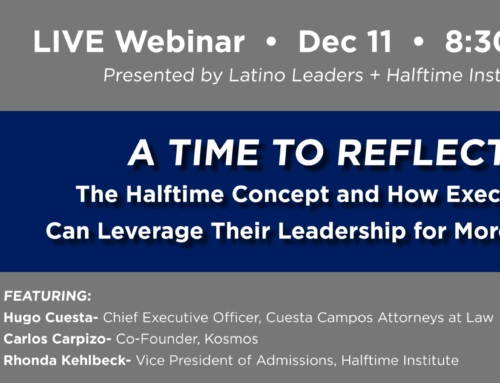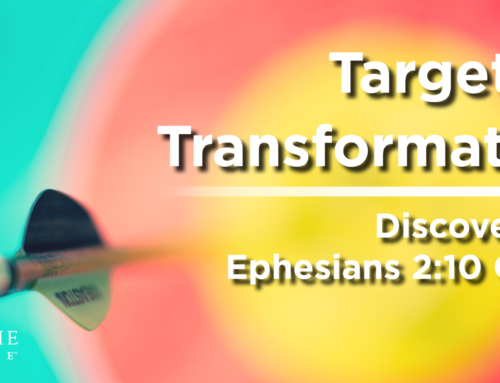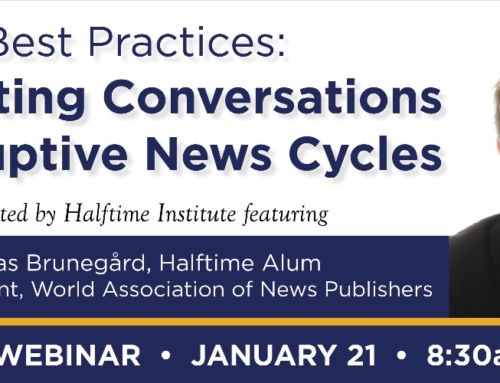What do you do when you’ve solved complex problems your whole career, yet you get to a point where you can’t put together the puzzle pieces of your own future path? It is an unsettling place to be for sure. It happened to me, and it happens to most successful leaders in mid-life.
You sense a shift of some sort is needed. You feel discontent and restless. But when you try to determine what your next move will be, you are uncertain and confused.
Can you relate? Several years ago, I felt this way.
Things looked pretty good on the outside: I had a great job and a wonderful family. On the inside, however, I was struggling with a lot of discontent, knowing that I needed to change something. When I talked to my friends, they didn’t understand. I was overwhelmed by the work it was going to take to figure it out.
It felt like when you’re about to start a 500-piece jigsaw puzzle. You dump all the pieces out on the table and there’s this overwhelming pile of chaos you have to bring order to.
When starting a puzzle, it always helps to first find the corners and the edges. Then, you gain a much cleaner perspective for what to do next.
Fortunately, when I found myself staring at the 500 jigsaw pieces of my life, a friend introduced me to the man who became my Halftime Coach. Having walked others through a similar season, my Coach knew the best place to start. I wanted to answer “What Next?” but he was quick to inform me that we first had to look at my core – strengths, passions, and experiences – my puzzle piece corners.
I felt like I had my strengths down. Gosh, I had 82 pages of feedback from my corporate career to inform me! I knew what I was good at and where I could contribute. Passion was the challenge. I had no idea what I was passionate about. And I didn’t know where to start.
He shared with me a famous quote by Howard Thurman that has guided me personally and allowed me to help many halftimers since becoming a Halftime Coach myself:
“Don’t go find out what the world needs and then go do that. Instead, find out what makes you come alive and go do that. What the world needs is more men and women who have come alive.”
The quote put words to that unsettled feeling I had inside. I was on a quest to discover what makes me come alive and get to it – not only for myself, but also to make a lasting impact.
The Apostle Paul writes about this in his letter to the Galatians: “Make a careful exploration of who you are and the work you have been given, and then sink yourself into that. Don’t be impressed with yourself. Don’t compare yourself with others. Each of you must take responsibility for doing the creative best you can with your own life.” (Gal 6:4-5 MSG)
So, what would my creative best look like in this next season?
My Halftime Coach introduced me to a model called the Sigmoid Curve (or S-Curve). I had seen this sort of graph from my corporate background, but usually in the context of product development. This time, my Coach encouraged me to plot my personal/professional journey on the S-Curve. This was really helpful at the time because it helped me visualize what I was going through and where I was heading.
As we go through life, we have seasons where we feel like we’re contributing well and living a productive and fulfilling life. We also have seasons where we are in a bit of a learning curve and it feels slow and sticky. Life is a series of these S-curves.
Instead of feeling stuck and discouraged, this exercise helped me realize that I was in a new learning curve, which meant I had to find a new normal.

- Place yourself on the S-curve. Identify where you are. It is really difficult to do anything until you know where you are.
- Ask: What do you bring to your S-curve in this season? This is where you explore your core. What strengths do you bring to this season? What are you passionate about? What experiences do you bring – successes, failures, learnings? What parameters does this season have? For me, I still had a teenager in the home and one in college, so whatever change I made needed to take this into account.
- Ask: How do you navigate the S-Curve in a healthy way? How do you mitigate risk? Every time we make a transition, there’s a bit of a decline, a learning curve. That can be scary when we’ve been on the incline for some time. Most people want to reduce their decline stage so it’s not too steep, long, or scary. At the Halftime Institute, we help leaders shorten their decline stage through coaching. A coach can help you avoid blind spots, take advantage of best practices, and begin to formulate a plan. They can also help you gain perspective on this stage and provide accountability. Sometimes we must slow down and take stock. A coach can help you unwind from the breakneck pace of life to reflect and recalibrate.
We did this Sigmoid Curve exercise recently in our Dream Together workshop for couples. We described this season with the phrase “life between the curves”. We asked “What is ‘life between the curves’ like?” The response: Emotional, fearful, stressful, rewarding.
During the workshop session, men and women came up and each placed a dot on the curve for where they were in that moment – on the incline, on the decline, wherever. Every time I facilitate this exercise in a workshop it reminds me of the need for community during a season like this. Everyone’s dots were in different places, but seeing that visually brought such a sense of relief throughout the room. There’s value in knowing where you are and having people around you who are at a different place and pace in life.
What about you?
Are you experiencing “life between the curves”?
How could you benefit from community around you?
How could a coach bring greater clarity and help you find a way forward?
We’re here to help. Over the past 20 years, we’ve successfully walked thousands of men and women through seasons of mid-life transition. In fact, over 300 men and women on 5 continents are working through the halftime process this year!
We’d love to have you join a cohort or get paired with a Halftime Coach.
For more information, visit these program pages, or fill out the contact form below to talk with our Admissions Team.






